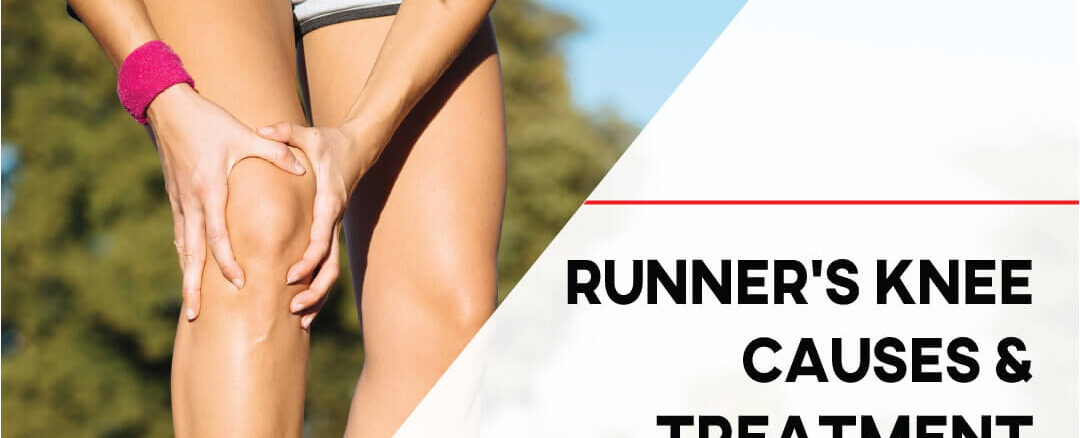Runner’s knee is characterised by dull pain around the front of the knee (patella). In this area, the knee joins the lower end of the thigh bone (femur). It’s not only for runners. Again, it is not a specific injury. It includes several different conditions, like patellofemoral malalignment, anterior knee pain syndrome, iliotibial band syndrome, and chondromalacia patella.
Running, as the name implies, is a common cause of runner’s knee, but any action that strains the knee joint regularly can develop this disorder. For example, walking, biking, skiing, cycling, jumping, and playing soccer can also cause a runner’s knee.
Moreover, runner’s knee is more common in women than in males, especially among middle-aged women. Also, people with increased weight are more likely to get this condition. In this blog, I will tell you about Runner’s knee. Its common causes, prevention, and treatment. So, let’s get started.
Some Common Causes Of Runner’s Knee
A structural defect or a certain technique of walking, running, or playing sports might cause a runner’s knee. Other factors that can contribute to runner’s knee are:
- The kneecap is too high in the joint of the knee
- Tight hamstrings
- Weak thigh muscles
- Injury
- Poor foot support
- Tight Achilles tendons
- Walking or running while the feet roll in and the kneecap is pulled outward by the thigh muscles
- Excessive training or overuse
What are the symptoms of runner’s knee?
A dull, aching pain around or behind the kneecap, or patella, especially where it joins the lower section of the thighbone, or femur, is the main symptom of runner’s knee. You may experience pain while:
- Kneeling
- Running
- Walking
- Squatting
- Climbing or descending stairs
- Sitting for a long time with the knee bent
- Sitting down or standing up
Swelling, grinding, or popping in the knee are some of the other symptoms.
The pain on the outside of the knee is the most severe in iliotibial band syndrome. The iliotibial band connects the hip to the lower leg here, which is the thick inner bone of the lower leg.
How Is It Treated?
The pain of runner’s knee usually goes away on its own with time and treatment to address the problem causing the pain. You can do the following to help ease your pain and speed up your recovery:
Allow your knee to rest.
Avoid doing things that aggravate the pain, such as running, lunging, squatting, or sitting and standing for long periods of time.
Apply Ice
To relieve swelling and pain, apply ice to your knee for 20-30 minutes every 3-4 hours. Do it for 2-3 days, or until the pain is gone.
Wrap your knee in a towel.
Give it extra support with an elastic bandage, sleeves or patellar straps.
Elevate your leg
When you sit or lie down, elevate your leg on a pillow.
Take NSAIDs
If needed, take NSAIDs such as naproxen or ibuprofen. These medications are used to treat pain and swelling. However, they can have negative side effects, such as an increased risk of bleeding and ulceration. Use them at the recommendation of a doctor.
Exercising
Stretching and strengthening activities, particularly for the quadriceps muscles, are recommended. Your doctor may refer you to a physical therapist who can teach you how to do it.
Arch Support
Consider orthotics or arch supports for your shoes. They might be able to help you with your foot position. You can either buy them in a store or have them built to your specifications.
If these methods fail to relieve your knee pain, consult a doctor. Although it’s rare, severe cases of runner’s knee may necessitate surgery. An orthopaedic surgeon can remove or replace damaged cartilage and, in extreme circumstances, realign your kneecap to distribute stress more evenly throughout the joint.
How can a Runner’s knee be prevented?
You can take the following steps to prevent runner’s knee:
Stretch.
Warm-up for five minutes before you run or engage in any activity that stresses the knee. You can do exercises to increase the flexibility of your knee and prevent irritation.
Stay in shape.
Make sure your entire health and fitness are in good working order. If you’re carrying extra body weight, talk to your doctor about developing a weight-loss strategy.
Gradually increase training.
Never increase the intensity of your training suddenly. Instead, make small modifications over time.
Use proper running form.
Keep your knees bent and maintain your core tight to avoid leaning too far forward or backward. Try to avoid running on concrete. When descending a steep incline, walk or run in a zigzag pattern.
Use proper running shoes.
Purchase high-quality shoes with good shock absorption and ensure that they fit correctly and pleasantly. Running in worn-out shoes is not a good idea. If you have flat feet, you should use orthotics.
Click here to contact for more information


